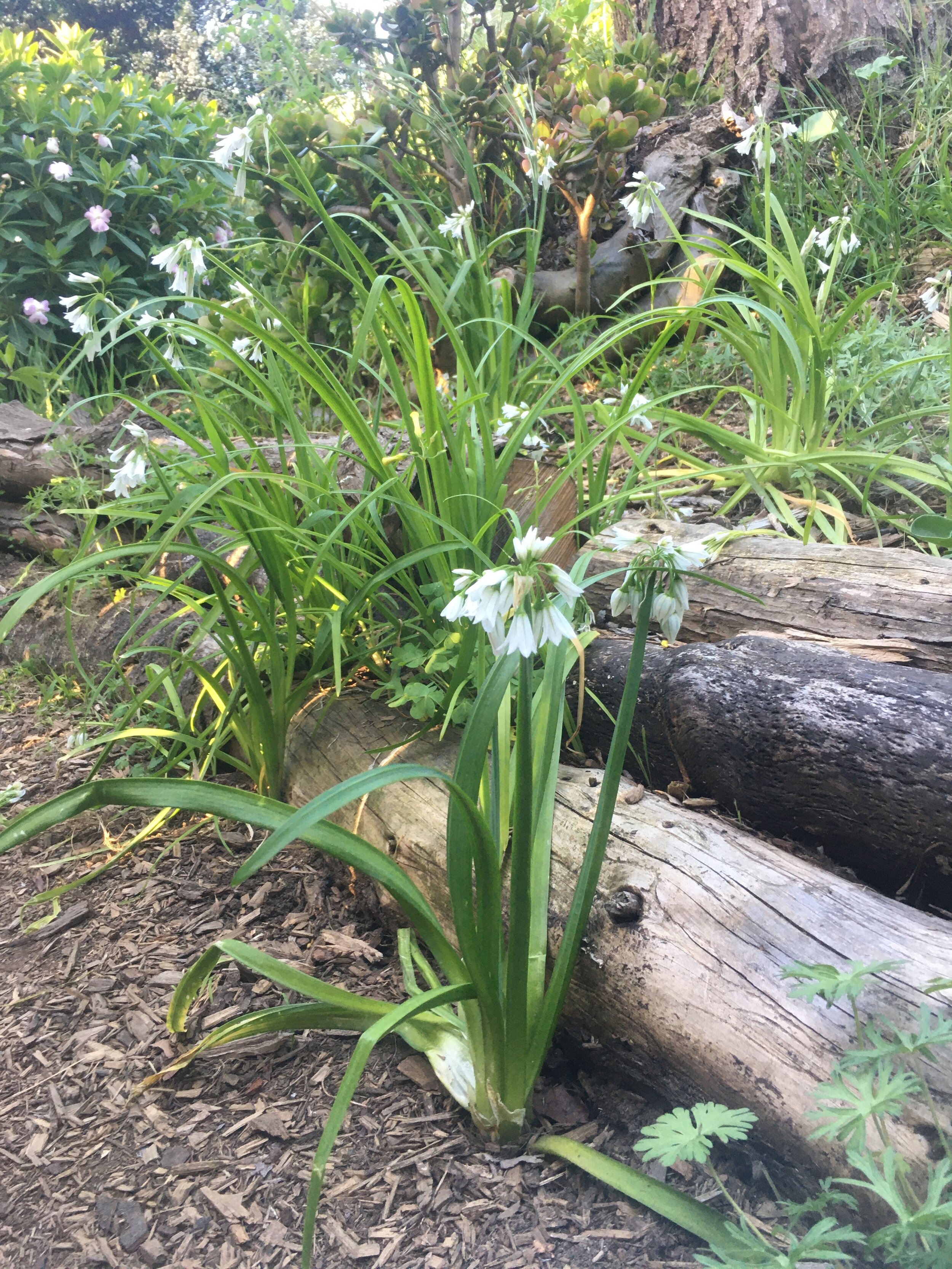Forage for your Food!
/There’s fresh, abundant food growing wild right outside your door! Foraging for food is fun and empowering, and you’ll be surprised just how delicious the foods you can make from these plants are. It’s especially easy in the San Francisco Bay Area - here are several varieties of plants that are easy to find and prepare.
None of the plants below have any poisonous qualities and are not easily mistaken, so do not fear! But please do wash your harvest very well when you return home.
Identify: Light green, circular leaves. More mature leaves have a small white flower emerging from the center of the leaf. Most often found in shady areas, usually growing densely.
Harvest: Pick leaves, being careful not to crush them. Roots, stems, leaves, and flowers are all edible.
Prepare: Salads, sandwiches, or cooked down like spinach. This leafy green is extremely high in vitamin C, vitamin A, and iron.
Wild Onion
Green-veined petals.
Identify: 12’’-14’’ stems topped with clusters of delicate white flowers, often pointed down. The six petals of the flower have green veins. If you are unsure, rub your fingers and smell for onion!
Harvest: Pull up the whole plant! Dig a bit around the roots to loosen the soil and make sure you pull up the bulb as well.
Prepare: Use this plant like you would a scallion or green onion. The flavor is delicate and mild. Flowers make a flavorful and beautiful garnish for any dish!
Wild onion growing abundantly in Bernal Heights, SF!
Wild Fennel
Identify: Look for feathery leaves with a true green color at this time of year. Later in the summer you’ll see clusters of yellow flowers.
Fennel flowers bloom late summer - early fall in the Bay Area.
Harvest: All parts of the plant are edible (but don’t bother looking for a root on this one - it does not produce a bulb like the fennel you find in the grocery store). Leaves are most tasty at the beginning of their growing season (when they’re lower to the ground), and flowers and seeds are delicious too.
Prepare: Eat the leaves raw in salad or cooked in soup and salad, or even make a pesto! The seeds and pollen can be used to flavor all kinds of cooking, and are especially tasty in baked goods.
Notes: Wild fennel is a particularly invasive species. Do not be shy harvesting, especially seed heads that will reproduce and create more plants.
This year’s new growth emerging from the base of last year’s stalks. Seeds and leaves to forage here!
Borage
Identify: Ovular leaves with a prickly texture and periwinkle star-shaped flowers with a black interior, usually pointing downward
Harvest: Pluck flowers from the plant (saving some for pollinators)! Carefully pick leaves where they attach to the stem. The bristles on the leaves are only minor irritants, but use gloves if your skin is sensitive.
Prepare: Use flowers as tasty garnish for all kinds of dishes and drinks - they have a mild flavor reminiscent of cucumber. Leaves are best when cooked- the bristles become undetectable. Try making a pesto sauce, soup, or cooking them down like spinach. Freeze the flowers in ice cube trays! There are hundreds of recipes online, many for Borage cocktails and other creative things.
Notes: Borage is a plant used in cuisines all over the world since ancient times. It is extremely nutritious with high levels of vitamin B and fiber.
Nasturtium growing rampantly in Golden Gate Park.
Nasturtium
Identify: Circular, dark green leaves on a vining plant. Flowers have five petals, and common colors are yellow, orange, and red.
Harvest: Pick only young leaves, plus flowers and seeds.
Prepare: Flowers are another tasty addition to salads and garnish for dishes. Nasturtium butter is incredible on sourdough bread. Leaves are a great addition to pesto and sauces. Seeds can be pickled like capers!
Note: Nasturtium leaves and flowers can be quite spicy! The sunnier the location of the plant, the spicier it will be.
Look for these pointy, oval-shaped leaves. This plant has buds just about to open to tiny white flowers.
Chickweed
Identify: Tiny, oval-shaped leaves with five-petaled white flowers. Leaves are pointy at the tip.
Harvest: Pull the entire plant out, then cut the roots off. Leaves, stems, and flowers are edible, but leaves are most delicious before the plant has started flowering.
Prepare: Use greens for salads! If the plant has already flowered, leaves are best cooked in soups or stews. This chickweed pesto looks tasty as well!
Jamie’s go-to foraged salad
I forage and chop miner’s lettuce, wild fennel, wild onion (plus flowers) in McLaren Park!
Top the greens with sliced radish and grated pecorino, and dress with a simple mixture of olive oil, lemon and salt.
As for the pasta? Lemons “foraged” from a backyard tree, following this recipe!











